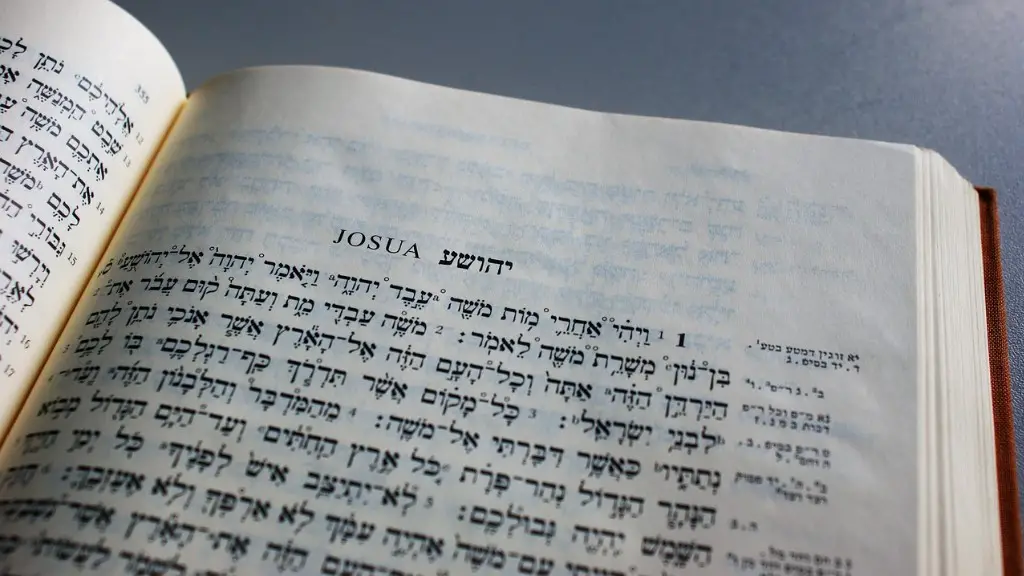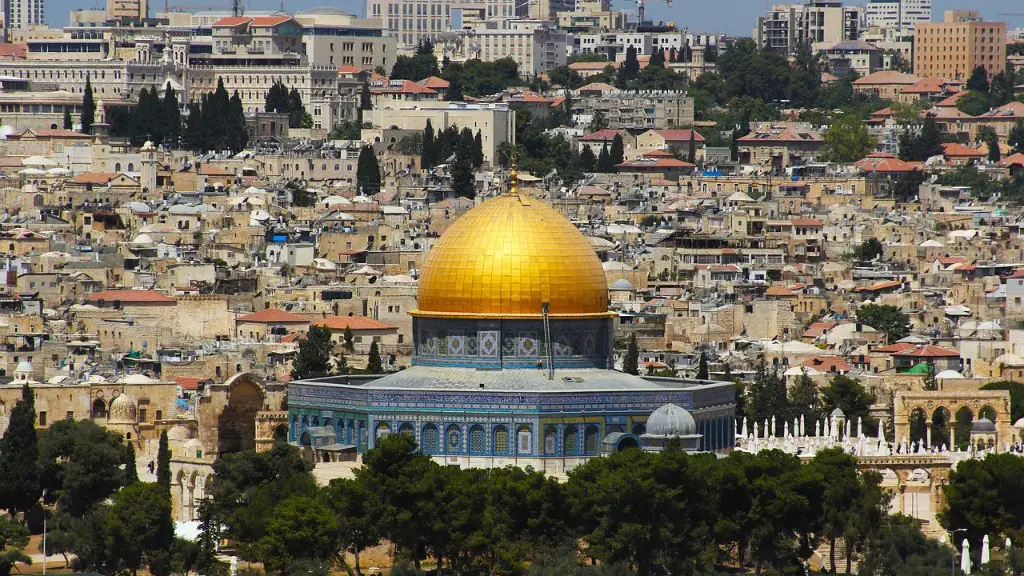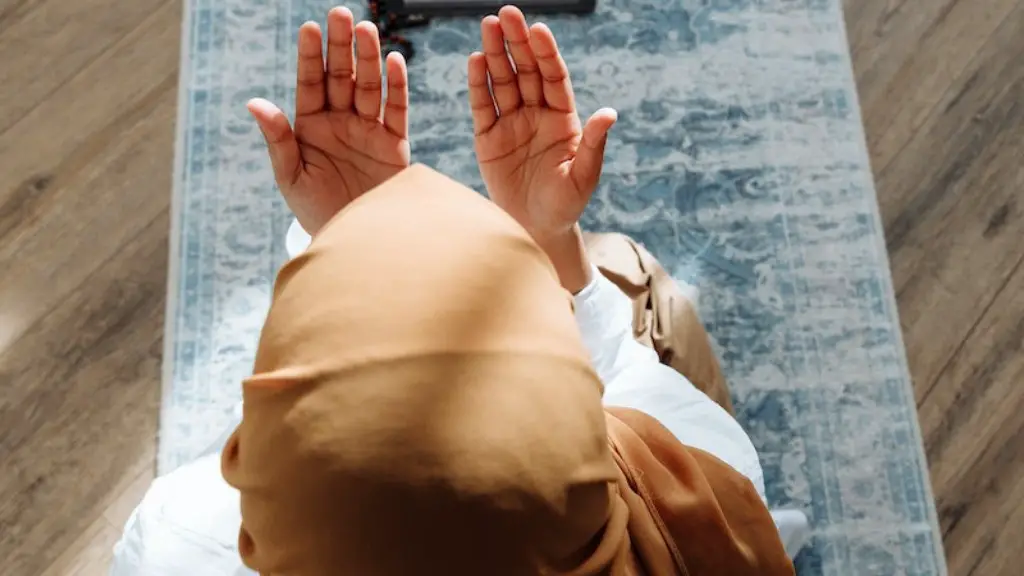What Is Ultra Orthodox Judaism
Ultra Orthodox Judaism is a form of Judaism that is largely motivated by strict adherence to religious law and rules, which are based on the written and oral teachings of the Torah. This form of Judaism is known as Haredi Judaism and is considered to be one of the most stringent of all forms of Jewish practice. The name “Haredi” means “trembling,” which refers to the way in which adherents of the movement approach God and strive to live holy lives. People who practice this form of Judaism are known as “Haredim.”
At its core, the Haredi movement is based on the idea that one must adhere to the strict letter of the law and is highly ritualistic. It places great emphasis on doing one’s duty to God and following the rituals as prescribed in the Torah. As such, Ultra Orthodox Jews tend to be very particular about observing the Jewish holidays and keeping kosher, which requires them to abstain from particular foods and meals that are not considered to be kosher. They also adhere to strict dress codes, whereby certain elements of clothing must be worn and certain types of clothing must not be worn. This includes men wearing yarmulkes at all times, and women covering their hair.
Ultra Orthodox Jews are usually some of the most observant members of the Jewish community, often living in segregated communities and attending exclusively Jewish schools. This lifestyle can be difficult and demanding, but also highly rewarding. The Haredi movement often produces some of the most devout and observant members of the Jewish community, and their commitment to religious obligation is often seen as an inspiration to others.
The Haredi movement is often divided into two distinct communities: those who are affiliated with Hasidism, and those who are affiliated with non-Hasidic forms of Ultra Orthodox Judaism. Hasidism is a movement that was founded in the 18th century in Eastern Europe, which emphasizes mysticism and a connection between the individual and God. While Hasidism is often seen as a more spiritual form of Ultra Orthodox Judaism, it has also been criticized by some for its strictness and adherence to certain rules.
Non-Hasidic forms of Ultra Orthodox Judaism are often referred to as “Yeshivish.” These are still highly observant communities, but lack the spiritual focus of Hasidism. In many ways, Yeshivish Jews have more of a focus on the study of Jewish law, and they tend to be more politically engaged than Hasidic Jews. In addition, they are also less likely to wear distinctive clothing, and may connect with non-Orthodox Jews and outsiders on a more personal level.
History
Ultra Orthodox Judaism has its roots in the 18th century. It was during this time period that the first Hasidic movement was founded by the Baal Shem Tov, in what is today Belarus. The original Hasidic movement was in part a reaction to what was seen as a decline in religious observance. This led to a movement that was highly ritualistic and placed a great emphasis on doing one’s duty to God.
The movement slowly spread throughout eastern Europe, and soon there were many distinct Hasidic communities. Many of these distinct communities eventually moved to other countries, such as the United States and Israel. This led to a proliferation of Ultra Orthodox communities in many countries, and it also led to the emergence of non-Hasidic forms of Ultra Orthodoxy, such as Yeshivish.
Demographics and Culture
Ultra Orthodox Judaism is a minority within the Jewish community, but it has an outsized influence on Jewish culture and society. The Haredi population has grown rapidly over the past few decades, and today more than 1 million people in the United States and Israel identify as Ultra Orthodox. This population is overwhelmingly young and has one of the highest birth rates of any religious group, which has been a key factor in its rapid growth.
The Ultra Orthodox population is often seen as very insular and exclusive, but this is not always the case. While there are some communities that have a strong sense of “us vs. them,” many Ultra Orthodox Jews are engaging with the world outside of the community in various ways. For example, many Ultra Orthodox Jews are using the internet, smartphones, and other modern technologies, in order to stay informed and connected with the outside world.
Additionally, many Ultra Orthodox Jews are engaging in other forms of activism and advocacy, such as speaking out against social injustices and participating in protests. This shows how the Ultra Orthodox population is not as monolithic as it may seem, and demonstrates the impact that the movement is having on the broader Jewish community.
Controversies and Criticism
Ultra Orthodox Judaism has come under criticism in recent years for its adherence to strict gender roles, which has been seen as oppressive towards women. This has included criticism of the marriage laws and the refusal of many Ultra Orthodox communities to accept women in leadership roles. There has also been criticism of the way in which the Ultra Orthodox population has sometimes been seen to rely on government subsidies.
In response to this criticism, there have been some moves towards more progressive forms of Ultra Orthodox Judaism. This has included attempts to bring women into leadership roles, and to reform some of the marriage laws. Additionally, many Ultra Orthodox communities are looking for ways to engage with the outside world, while maintaining their religious commitments.
Conclusion
Ultra Orthodox Judaism is a form of Judaism that is based on strict adherence to religious law and ritual. It is a highly ritualistic form of Judaism, and is often divided into two distinct communities: those who are affiliated with Hasidism, and those who are affiliated with non-Hasidic forms of Ultra Orthodox Judaism. The Ultra Orthodox population is a minority within the Jewish community, but it has an outsized influence on Jewish culture and society. In recent years, the movement has come under criticism for its adherence to strict gender roles and its reliance on government subsidies. There have, however, been some moves towards more progressive forms of Ultra Orthodox Judaism.
Kashrut & Behavioral Rules
The Ultra Orthodox community adheres to a strict set of rules when it comes to dietary and behavioral practices. The rules of Kashrut dictate what is and what is not permitted to be eaten, as well as which days certain foods are restricted from being eaten. In addition, the Ultra Orthodox community has specific rules of dress, including modesty codes for men and women and the wearing of yarmulkes. These rules and regulations are followed with great diligence and form the basis of their religious and cultural lives.
The rules of Kashrut, as laid out in the Torah, are observed in many Ultra Orthodox communities in order to ensure a higher level of health and hygiene. This strict observance allows individuals to maintain a high level of physical health, as well as mental and spiritual wellbeing. Additionally, Kashrut also enables Ultra Orthodox Jews to be able to participate in the daily life of their community, as there are specific guidelines for what types of food can be eaten and where meals should be taken.
The Ultra Orthodox community values its behavioral regulations as much as it does the dietary regulations of Kashrut. These regulations are observed in a variety of ways, from the type of clothing that is to be worn to the manner in which individuals address one another. Additionally, there are certain aspects of lifestyle, such as refraining from gossip, that are said to be characteristic of the distinctive Ultra Orthodox lifestyle.
Education & Culture
Ultra Orthodox Jews place a great importance on education, and this is reflected in their culture and practices. Within their communities, ultra-Orthodox Jews place a great deal of emphasis on education in religious study, as they strive to pass down the knowledge of their faith from generation to generation. This has led to the emergence of many schools and educational programs dedicated to the specific needs of the ultra-Orthodox community.
Additionally, the culture of the Ultra Orthodox community exists primarily within their own communities, as Ultra Orthodox Jews tend to remain largely separate from other forms of Judaism. Within their communities, the Ultra Orthodox Jews have established their own culture, which includes customs and practices that are unique to their community. This includes everything from their language to their style of dress, and allows the Ultra Orthodox community to maintain their distinct identity in society.
In addition to this, the Ultra Orthodox community places a great emphasis on the importance of family. They strive to maintain strong familial bonds and pass down traditions from generation to generation. This can be seen in their emphasis on the importance of marriage and the observance of the Sabbath. These traditions and practices are essential to the Ultra Orthodox community and form the backbone of their culture.
Places of Worship & Ceremonies
Ultra Orthodox Jews have their own places of worship known as synagogues. These synagogues are often quite different from traditional synagogues in terms of their architecture, as they are often smaller and more intimate than their more traditional counterparts. They also generally follow the same basic rules and practices, such as the wearing of yarmulkes and a strict commitment to following the Sabbath.
In addition to the synagogue, Ultra Orthodox Jews also have their own ceremonies and rituals that are distinct from those of other forms of Judaism. These ceremonies often revolve around life cycle events, such as weddings and funerals, and they typically involve the use of traditional prayers and rituals that are specific to the Ultra Orthodox community. Additionally, Ultra Orthodox Jews also practice ritual activities such as the laying of tefillin, and they often place a great deal of importance on attending religious services.


